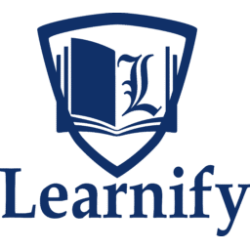Workplace Safety Standards Training Course.
Introduction
Workplace safety is a cornerstone of effective facilities management. With the increasing complexity of modern workplaces, it is vital to stay updated on global safety standards, technologies, and practices to ensure employee well-being and operational continuity. This 5-day course provides a comprehensive understanding of workplace safety regulations, risk management strategies, and proactive measures to build a culture of safety while maintaining compliance with international and local standards.
Objectives
By the end of this course, participants will:
- Understand workplace safety regulations, such as OSHA, ISO 45001, and other regional standards.
- Learn to conduct workplace safety audits and risk assessments.
- Develop emergency preparedness and response strategies.
- Explore emerging trends and technologies in workplace safety.
- Build a comprehensive workplace safety plan to minimize risks and enhance compliance.
Who Should Attend?
This course is ideal for:
- Facilities Managers and Operations Directors.
- Health, Safety, and Environment (HSE) Professionals.
- Compliance Officers and Risk Managers.
- Maintenance Supervisors and Team Leaders.
- Human Resources professionals involved in workplace safety.
- Any professional responsible for safety standards in workplace environments.
Course Outline
Day 1: Introduction to Workplace Safety Standards
- Understanding Workplace Safety Regulations
- Overview of key standards: OSHA, ISO 45001 (Occupational Health and Safety), and local safety regulations.
- The legal and ethical importance of workplace safety compliance.
- Consequences of non-compliance: Fines, legal action, and reputational damage.
- Roles and Responsibilities in Workplace Safety
- Defining responsibilities for facilities managers and stakeholders.
- Creating a safety-conscious culture across teams.
- Workshop: Participants will identify applicable workplace safety standards for their organization.
Day 2: Workplace Safety Audits and Risk Assessments
- Conducting Safety Audits
- Steps to evaluate workplace safety systems and procedures.
- Common hazards in different workplace environments.
- Documentation and reporting requirements for audits.
- Risk Assessment and Mitigation
- Identifying and categorizing risks: Physical, chemical, ergonomic, and biological.
- Developing and implementing control measures to minimize risks.
- Case Study: Participants will analyze a workplace incident and identify root causes and prevention strategies.
Day 3: Emergency Preparedness and Response Planning
- Building an Emergency Action Plan
- Identifying potential emergencies: Fires, natural disasters, chemical spills, and active threats.
- Developing evacuation procedures and communication protocols.
- Designing training and drills for staff and contractors.
- Crisis Management in Facilities
- Incident response frameworks for minimizing damage and ensuring safety.
- Collaboration with first responders and external agencies.
- Interactive Session: Participants will draft an emergency response plan for a hypothetical workplace scenario.
Day 4: Advanced Workplace Safety Practices and Technology
- Modern Safety Tools and Technologies
- The role of IoT in workplace safety: Sensors, monitoring systems, and automation.
- Wearable technologies for real-time safety tracking and hazard prevention.
- Safety management software for reporting and compliance tracking.
- Behavioral Safety and Training
- Techniques to improve safety behaviors among employees.
- Designing and delivering effective safety training programs.
- Tabletop Exercise: Participants will create a digital safety monitoring plan for their facility using provided case details.
Day 5: Sustainability and Future Trends in Workplace Safety
- Integrating Safety with Sustainability Goals
- Aligning workplace safety with green building initiatives and certifications.
- Using sustainable materials and processes to minimize health risks.
- Anticipating Future Challenges in Workplace Safety
- Emerging risks: Hybrid workplaces, mental health considerations, and new technologies.
- Preparing for changes in safety regulations and global trends.
- Final Project: Participants will create a comprehensive workplace safety strategy tailored to their organization, incorporating compliance, training, technology, and future-proofing measures.
Course Wrap-Up and Key Takeaways
- Reflection and Group Discussion
- Participants will share insights, challenges, and solutions for workplace safety in their organizations.
- Discussing practical applications of safety measures and compliance strategies.
- Q&A and Closing Remarks
- Open forum for addressing questions and sharing feedback.
- Summary of actionable steps to enhance workplace safety and compliance.

